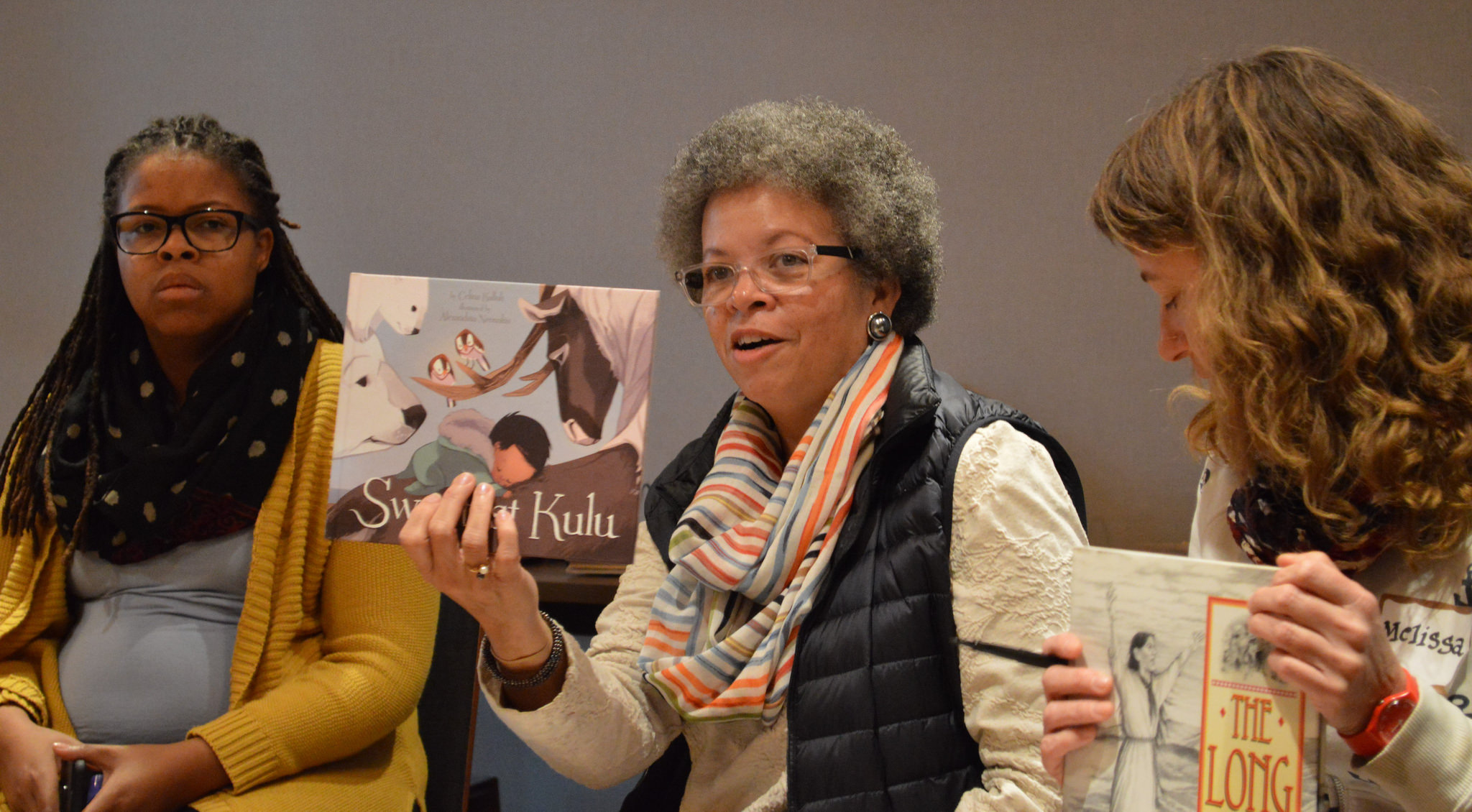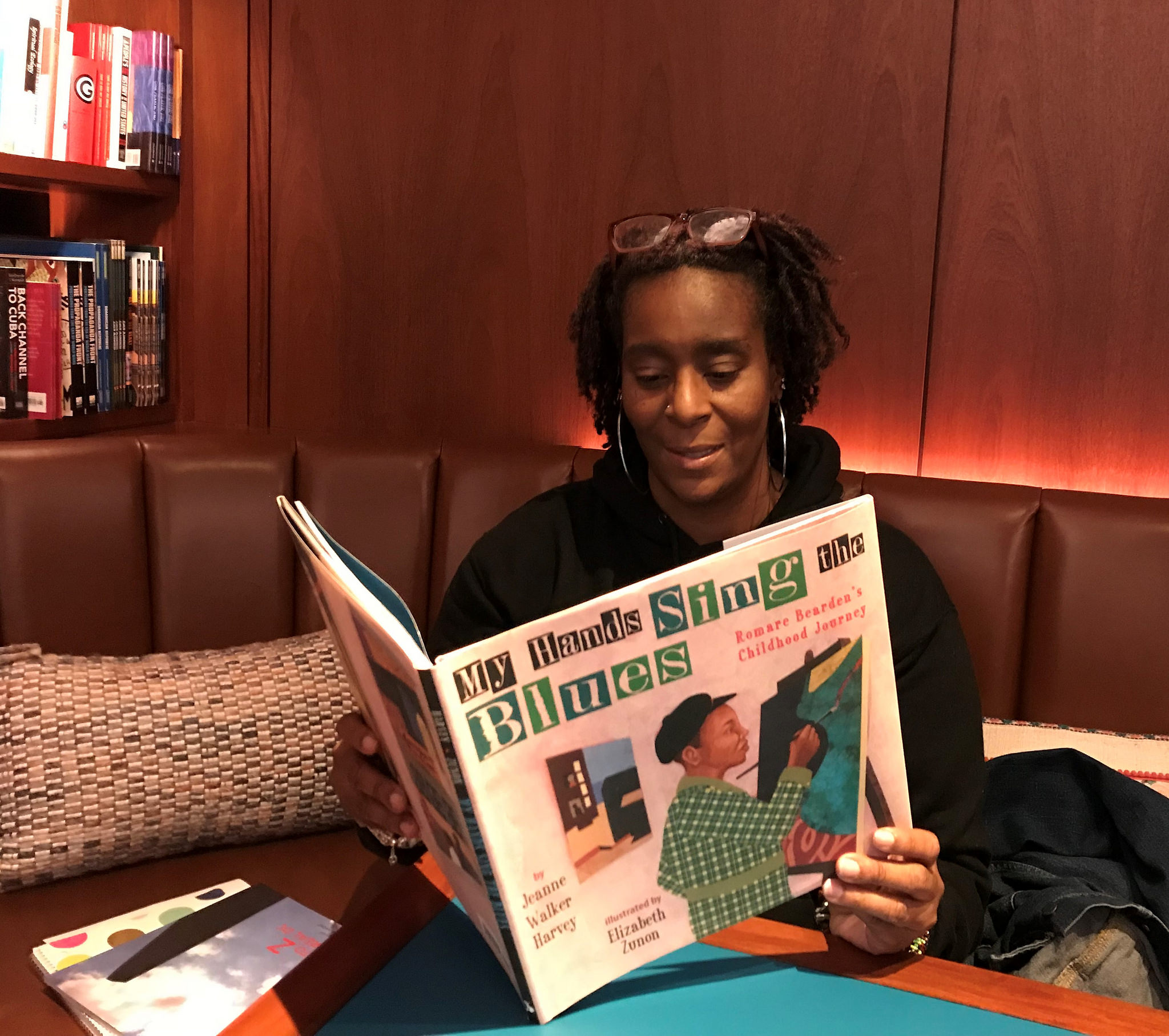Exploring Representation of Native Americans in Children’s Literature
During Native American Heritage Month, more than 25 teachers and librarians from D.C., Maryland, and Virginia spent the morning of Saturday, November 10 reading and critiquing children’s literature about Native Americans. The event was hosted by Project Unlearn and Teaching for Change's D.C. Area Educators for Social Justice at Eaton Hotel.
After an introductory activity, participants circulated around the room, in a silent gallery walk, to respond to critical questions posted on the walls.
Some of the questions were:
How do you currently teach about Indigenous communities in your classroom?
Why is it important to challenge stereotypes of Native Americans in early childhood classrooms?
How do you teach accurately about Indigenous and Native people when teaching Columbus Day or Thanksgiving ?
What questions have you heard young children ask about Native Americans?
In one of the gallery walk groups, Akilah English of DCPS explained the evolution of the ASL sign for Native Americans. Here is a video clip of the current sign you may use with your students and young learners.
Participants then gathered in groups and had vibrant discussions. Selecting two to three children’s books from our table with close to a hundred titles, participants used NMAI's Worksheet for Selecting Native American Children's Literature as a guide.
Before discussing the books, facilitator Rosalie Reyes shared some examples of common stereotypes about Native Americans. One example is the story below, shared with Teaching for Change by the parent of a five-year-old.
Each group shared their favorite books and why they recommended them. Many came from the American Indians in Children’s Literature list.
Resources were shared with participants to bring back to their teaching communities, including American Indian Perspectives on Thanksgiving (NMAI) and Thanksgiving Resources for Teachers and Students.
Following the session, a few teachers visited the Eaton Hotel library and were captivated by the multicultural selection.
Below are some responses from our attendees when asked, what is the most important thing you learned during the workshop?
How to disrupt stereotypes and “dominant” culture all year long.
I learned concrete strategies to teach about Native Americans, their history, and their present. I appreciated the discussion I had about teaching students about Columbus and Thanksgiving.
Lots of new book recommendations and feeling empowered to incorporate more books/images and resources for children. The checklist from NMAI is also very helpful.
Listening to different educators talk about their lesson plans and how they talk to the students are always the highlights of these workshops.
The session was planned by the DC Area Educators for Social Justice Anti-Bias Early Childhood Leadership team. The leadership team is pictured in the first photo of the slideshow below: Rosalie Reyes, Makai Kellogg, Marissa Howser, Nichelle Dowell, Carlos Duque, Shayna Tivona (with Henry.) Also on the leadership team is Denisha Jones (not in photo).
Five year old’s conversation with his mom about Native Americans.
This conversation was shared with Teaching for Change by the parent of a five-year-old. She noted that he goes to a progressive school and his home is filled with multicultural children’s books, including about Native Americans. It is indicative of how prevalent the stereotypes are and the importance of challenging them in early childhood settings.
M: Mom, who was the first person born in America?
Mom: Good question, it would be a Native American who lived on this land first, but I don’t know the specific person. We can try to look it up.
M: No, I mean the people who look like me, white people. Who was the first? The people who built the good houses.
Mom: What do you mean by good houses?
M: You know, the ones like ours with walls and a roof, not the pointy ones.
Mom: You mean, tepees?
M: Yes, those can easily fall down. I am talking about people who made the roads and towns and had better medicine.
Mom: Honey, Native Americans did many things better than we do now. They protected the earth when they grew crops. And their houses made sense for how they lived because they moved around some. Sometimes things can be different but not better.










